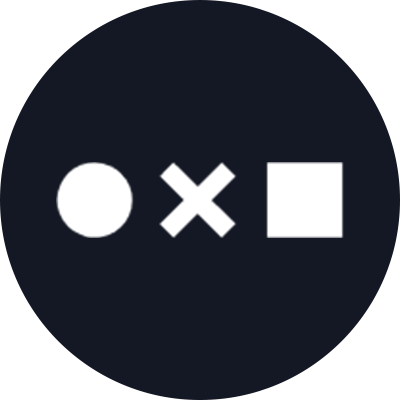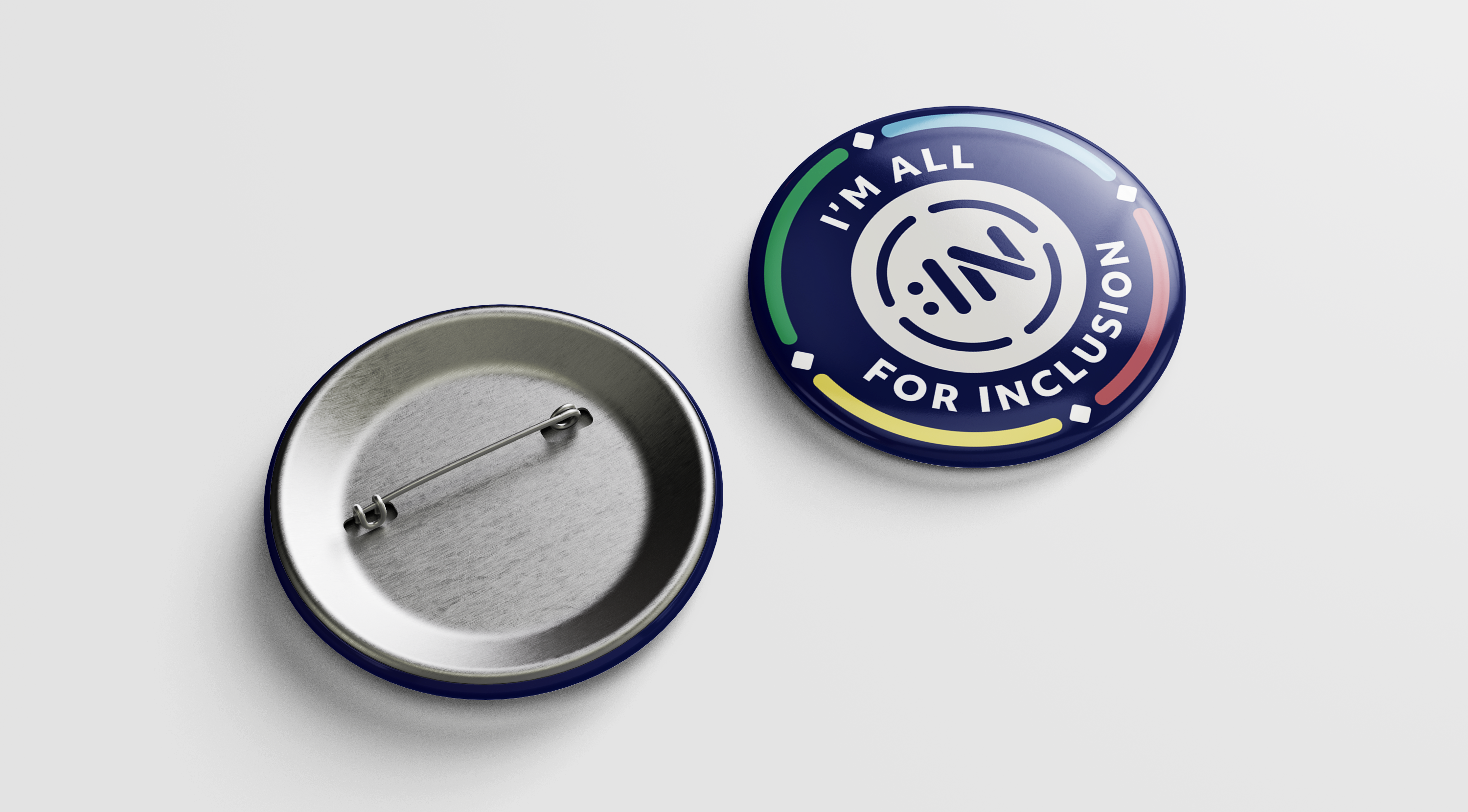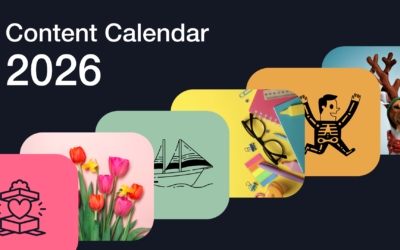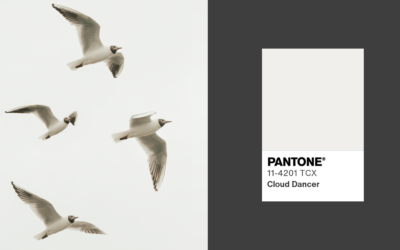Alex Clem is a Digital Marketing Associate at Disability:IN, where she works at the intersection of accessibility, inclusive marketing, and design for multiple platforms. We caught up with Alex to learn more about her career path, creative process, and best practices when designing for accessibility and disability inclusion.
Hi Alex! Tell us about yourself – how did you get to where you are today?
What started as a childhood dream of pursuing graphic design at just 10 years old led to me studying graphic design and marketing at the University of North Texas. The love for color theory, typography, and art forms has never left me since.
I explored content marketing while building up my graphic design expertise, offering new and innovative ideas for marketing campaigns that would drive substantial traffic increases. At that time, I was also dealing with multiple health issues and surgeries, which caused a shift in how I approached my creative work.
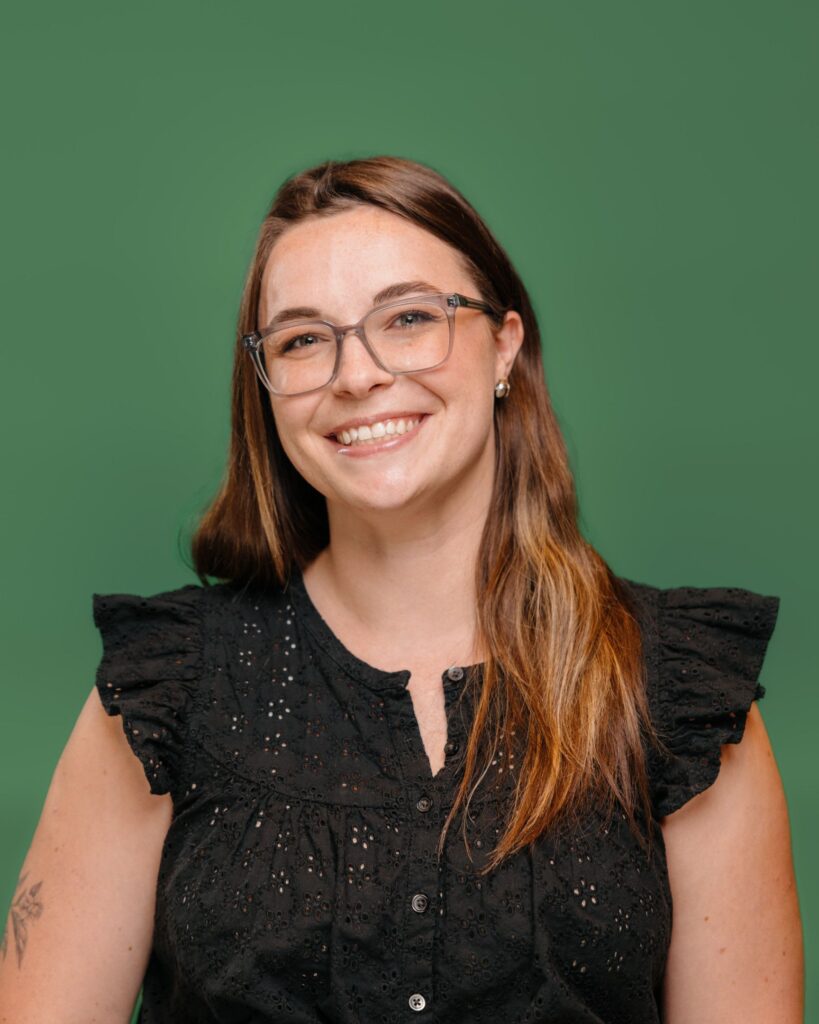
“Whether in iconography, typography, or layout design, accessibility guidelines frame how I build out my shapes, compositions, and color palettes.
One thing I learned is that simplicity and intentionality matter when designing with accessibility in mind.”
-Alex Clem, Disability:IN
The topic of accessibility was never introduced to me growing up, but my personal experience with disability and illness put me up close and center with the need for accessibility in the workplace and in design.
In late 2021, I joined Disability:IN, focusing on the intersection of marketing, design, and accessibility in my role. Learning more about what makes campaigns more accessible ignited a fire within me to continue to explore the intersections and advocate for increased accessibility within the workplace.
Today, almost 4 years later, I continue to drive impact both within Disability:IN and externally, share my story of being neurodivergent, and make connections globally – all while learning more about myself every day.
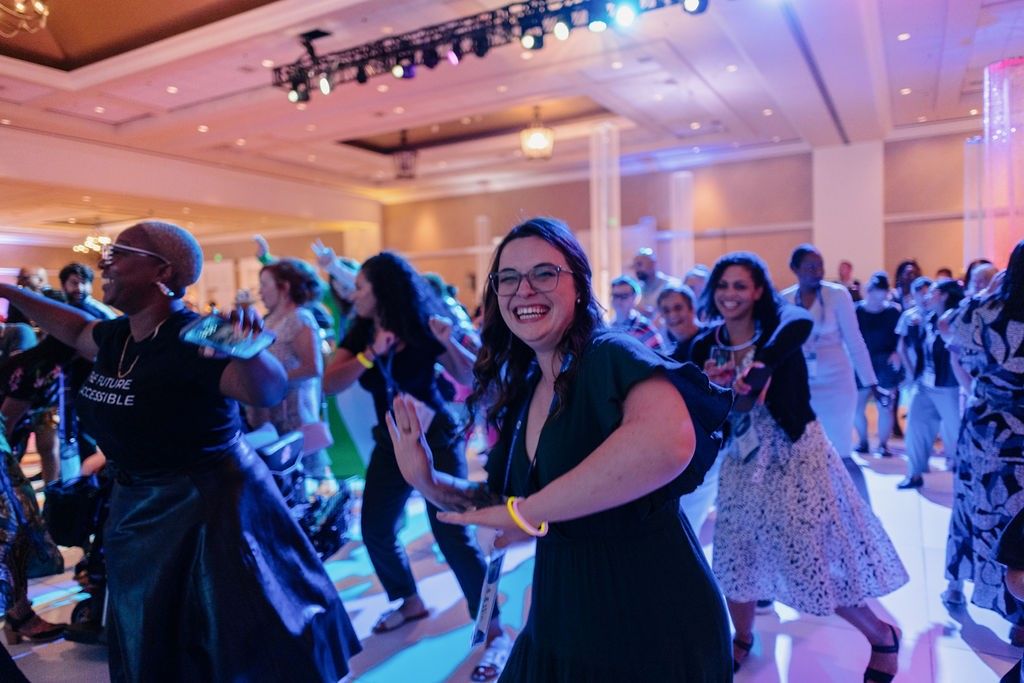
As Digital Marketing Associate at Disability:IN, your work sits at the intersection of marketing, design, and accessibility. Can you tell us more about Disability:IN and your role?
Disability:IN is the leading nonprofit resource for business disability inclusion worldwide. Now with over 550+ corporate partners, Disability:IN drives progress on disability inclusion through initiatives, tools, and expertise that deliver long-term business impact.
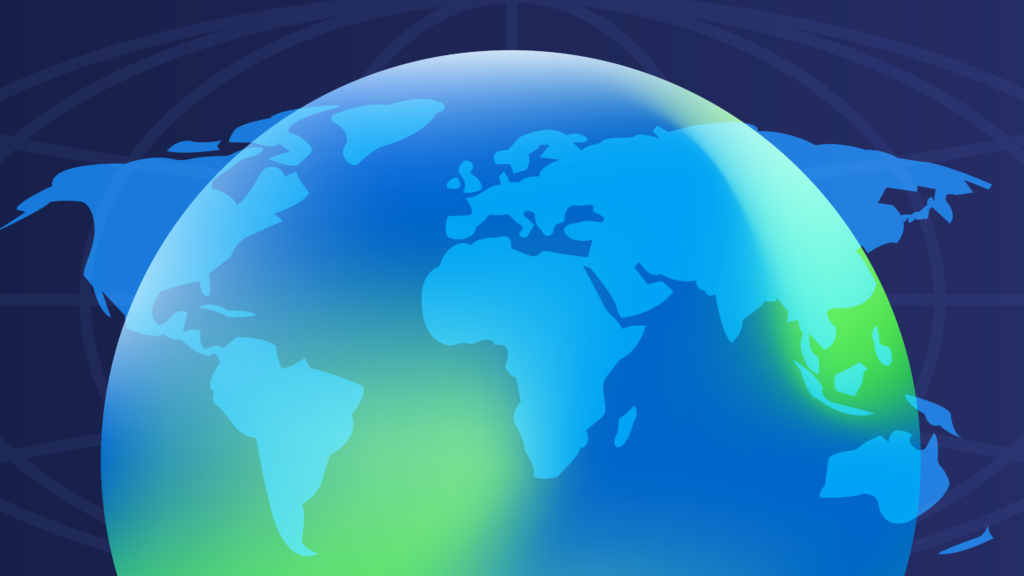
My role as the Digital Marketing Associate at Disability:IN is equal parts technical and creative – in complying with existing web content accessibility guidelines (WCAG) and exploring more accessible ways to visualize content, problem-solve, and improve user experiences.
While some may think of accessibility as a discipline that only applies to coding and development, accessibility impacts every discipline – especially design. Prioritizing accessibility at the beginning of the project makes it more inclusive and user-friendly in the end.
What does a day on the job look like for you and what are some of your favorite work tools and resources?
A day on the job consists of me working from my home office in Fort Worth, Texas, collaborating both within the internal team at Disability:IN and external partners. Another reason I love space I work in is that every day is slightly different; whether I’m designing a new logo, fine-tuning our website presence, analyzing digital analytics, or offering creative insights on studies and reports, I get to live and breathe accessibility and design.
As someone who responds well to direct communication, set deadlines, and structure, some of my favorite work tools are task management systems (such as Basecamp), Adobe Creative Cloud, and Brandfolder. Having an efficient way to organize brand assets, document tasks, and collect design feedback have been instrumental in how I design my workflows.
Some additional resources I recommend for design and accessibility are WebAIM, AccessibleWeb Color Contrast Checker, and WCAG Resources. I also utilize Adobe’s built-in accessibility tools while I build out my designs so there are no interruptions in the design process.
You’ve created graphic and typographic designs for a range of projects – what is your design process like? How do you approach new design projects and what does your workflow look like from start to finish?
Once I understand the parameters of the project, I start off by doing extensive design visual research and exploring visual themes in Behance, Pinterest, or Dribble before I experiment with ideating. As a hugely visual thinker, I usually have a flood of ideas by this point, and that is where I workshop my ideas to life within Adobe.
Each time I design, I am intentional about the intersections of design and accessibility and how to best balance it. Whether in iconography, typography, or layout design, accessibility guidelines frame how I build out my shapes, compositions, and color palettes. One thing I learned is that simplicity and intentionality matters when designing with accessibility in mind.
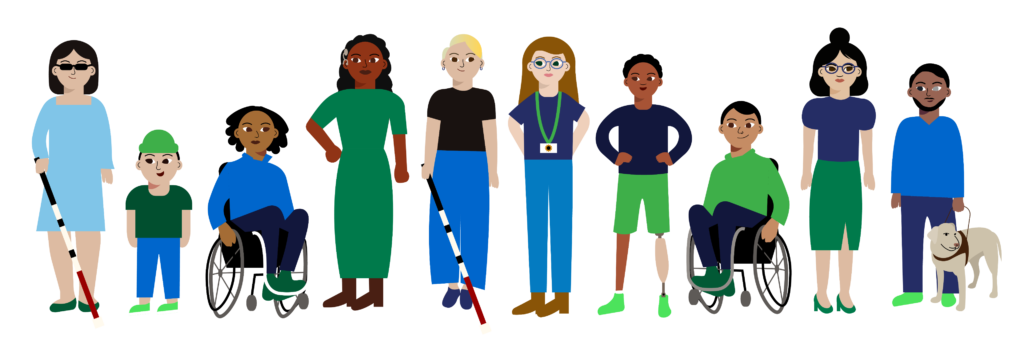
The best thing about Disability:IN is the power of collaboration. Bringing in multiple minds together to review, offer perspectives, and test for accessibility has made me a better designer. Once the visual design approach has been finalized and approved, the final exported design is then remediated to ensure utmost accessibility – meaning each design and text element is properly tagged and readable for those who utilize assistive technologies.
How do you approach creative collaboration internally with teams at Disability:IN and with external partners?
At Disability:IN, our Marketing and Communications team creates and puts on multiple campaigns, reports, webpages, events, and email communications throughout the year. Our small but mighty team works cross-collaboratively within and outside Disability:IN depending on the nature of each project.
To set us up for success, our team conducts strategic planning summits at the beginning of the year, creating an outline of how we want to approach each event or campaign throughout the year. We also reference any past campaigns, feedback, and analytics to better inform our creative directions going forward. At the outset, we approach each project with accessibility and inclusion as our top priority.
When collaborating with external partners, I offer insights on how to make existing designs more accessible, either by optimizing color contrast, tweaking typographic layouts, and using more inclusive iconography or imagery.
How have your personal experiences informed your work? Is there anything in particular you want people to know about AuDHD?
After being officially diagnosed with autism and ADHD (AuDHD), I realized that a huge chunk of how my brain operates was finally revealed. The routine-dependent nature of autism mixed with the impulsivity and chaos of ADHD – which often battle each other – led me to create a work environment catered to my neurodivergence.
I thrive in a work from home environment with access to subtitles on virtual meetings, organized and detailed task management systems, direct and simple communication, and frequent check-ins. Setting up a consistent routine, being intentional about my work-life balance, and monitoring myself routinely for signs of stress and burnout have allowed me to be more successful as a neurodivergent designer.
As an AuDHD creative, there is a constant tug of war in my brain. I wish people knew that every day is different for us, and that our needs, supports, and energy levels fluctuate every day.
When it comes to inclusive design and accessibility, do you have any top tips/ key considerations for how people can make their work more accessible and inclusive?
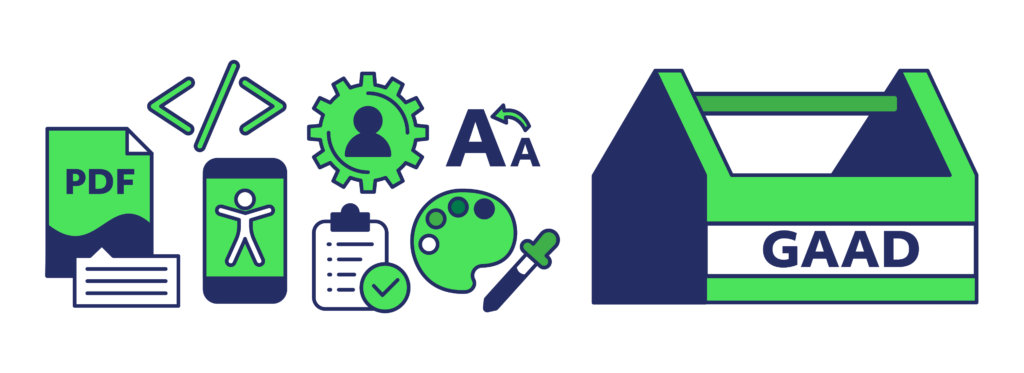
Yes! There are so many ways to make your creative work more accessible. The first places to start are by assessing your existing brand and communications.
Is your primary typeface easily readable across multiple formats? Do you have accessible color combinations within your brand guidelines, or do they need more color contrast to pass WCAG standards? Do you actively label headings in your content? Do you add alt text and image descriptions to all visual content across your platforms? These are questions you can keep in mind as you design content.
Inclusive and accessible design don’t happen overnight. It starts by reframing how you approach your design process. Start small at first and find what can be quickly implemented and start making strategic changes going forward to prioritize accessible design.
What’s been one of your favorite projects to work on so far?
My favorite project to work on every year is the branding for Disability:IN’s global conference. During our conference, we bring together thousands of business professionals in-person and virtually to learn more about how to be more disability inclusive in the workplace and beyond.
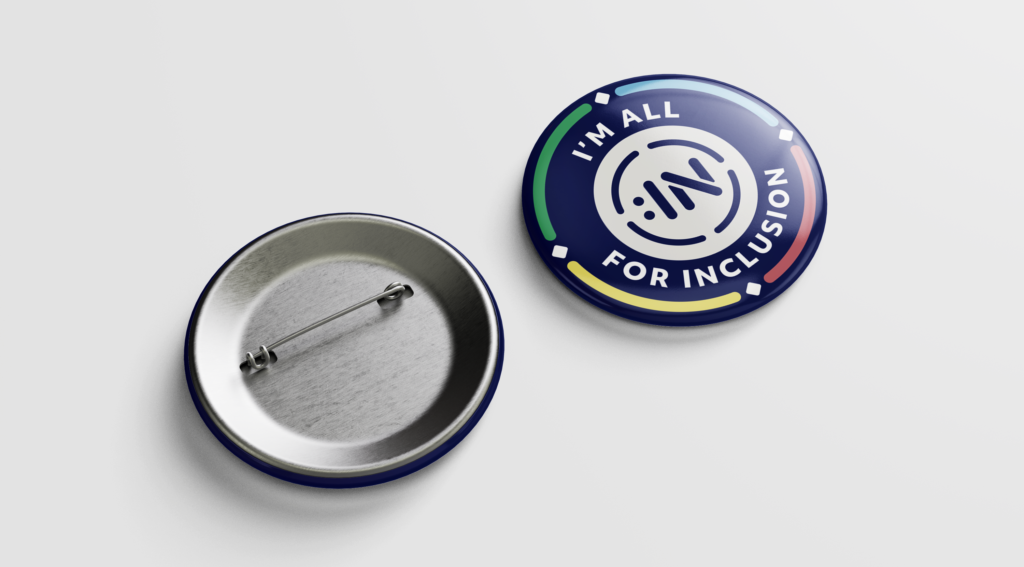
In addition to the conference signage and designs, I design specific conference merchandise that lives on buttons, stickers, and t-shirts. My favorite part of designing these is watching everyone’s reactions and excitement about adding them to their collections.
What would be your dream project?
As a neurodivergent and chronically ill creative, I would love to collaborate on designs and campaigns to bring more awareness to these communities. There is such a huge need for more authentic representation in the disability community in iconography, illustrations, and photography.
How can people support the work you’re doing at Disability:IN?
You can support the work we’re doing by engaging with Disability:IN on social media, subscribing to our email newsletter, and reading our recent research and reports on our online resources library.
What are you working on now and what’s up next for you?
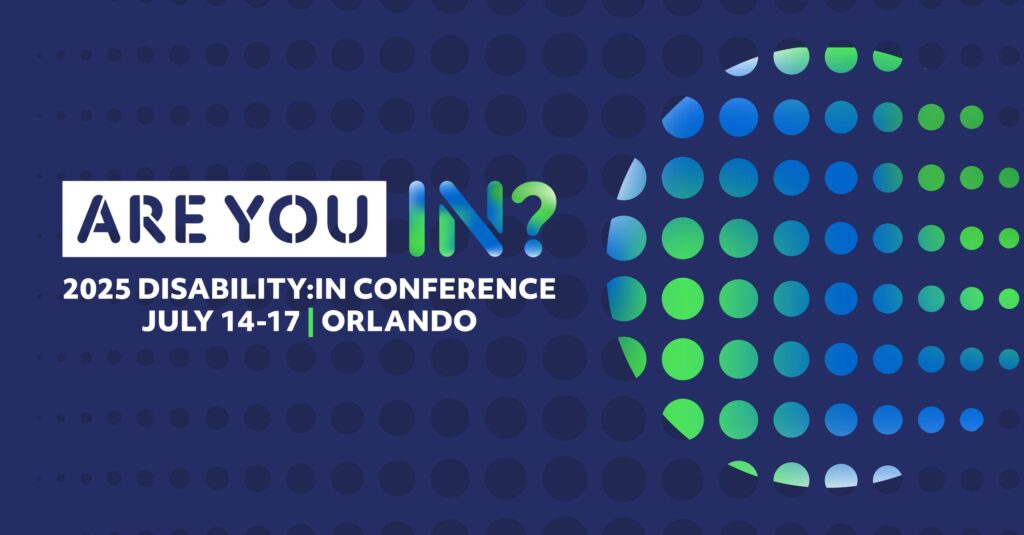
Right now, we are gearing up for our 2025 Disability:IN Conference in mid-July, where we will announce the 2025 Disability Index Report and release exciting research and findings. I am so anxious to bring these amazing projects to life! Stay IN the know by subscribing to our email newsletter.
Thank you for sharing with us Alex! To learn more about Disability:IN and Alex’s work, visit Disability:IN’s website, follow them on LinkedIn and Instagram, and check out their upcoming programs and resources.
Bonus: Free Accessibility Icons from Noun Project and Disability:IN
Noun Project recently partnered with Disability:IN to create a new set of 25 free icons celebrating accessibility, disability representation, and inclusion. You can check out the collection and download the icons here.

